|
American Supra: Book Four
Christmas In America,
Return to Georgia,
Teaching, Projects, Grants, Lectures, People,
Events and “Joe and Friends”, an April Exhibition
Blest hour! it was a
luxury- to be.
Samuel Taylor Coleridge,
1772-1834,
from Reflections on
Having Left a Place of Retirement
To love one maiden only,
cleave to her,
And worship her by years
of golden deeds.
Alfred Lord Tennyson,
1809-1892
Give me your tired, your
poor,
Your huddled masses
yearning to be free,
The wretched refuse of
your teeming shore,
Send these, the homeless,
tempest-tossed, to me;
I lift my lamp beside the
golden door.
Emma Lazarus, 1849-1887
In life courtesy and
self-possession, and in the arts style, are the sensible
impressions of the free mind, for both arise out of a
dsliberate shaping of all things and from never being swept
away, whatever the emotions, into confusion or dullness.
William Butler Years,
1865-1939, from Essays and Introductions, 1961

Tbilisi 5
It is the day before Christmas. We have our present already,
coming home to spend time with our children and friends. It
will be easier going back to Georgia.
On the night before Christmas, we have spaghetti, beer and
wine. I try to give a Georgian toast but it just does not
work.
On early morning Christmas day, I sit here in the living
room with the lighted tree and all the wrapped presents
until others get up to begin the ritual of opening gifts.
This season I am more interested in giving than receiving.
We will see how that plays out. Christmas is a time where
Samantha becomes a child again with the excitement of the
season (and now she is a 31 year-old mother). She will pass
this joy to Erin I am sure, just as we passed it on to her.
Yule time is a magical season, much more than the presents
under the tree. It is the songs of Christmas, the atmosphere
of counting our blessings and everyone on the street saying,
“Merry Christmas.” Coming home is the best present we could
give ourselves. As one friend told me long ago, “After the
money is spent, you forget its amount.” The wonder of the
work in the new exhibit on December 19th begins
to fade. “What’s next?” is my mindset. I am beginning to
think of the spring exhibition, my final showing in Georgia.
How do I top what I did in December? I don’t but maybe Joe
and Friends will be a new experience as rich as the last (as
all my Georgian artist friends come together to say
goodbye). It should have wide public appeal and show the
variety and skill of what is happening in Georgia. That
will make three major projects for the spring: finalizing
the placement of the American Art Archive Collection,
creating the first playground in the inner city in Tbilisi,
and the “Joe and Friends” exhibition. That is plenty to keep
me occupied until we fly to Beijing in May and then home to
Texas.
We get a rare treat on Christmas afternoon, an encore
performance of the Concert for New York City. It is five and
a half hours of pure pleasure and tears. I do not like all
the music but no one can deny the wonder of the whole
experience of America coming together to mourn those who
died and celebrate freedom. It is hard to find the words to
say how I feel. There is pride in America, certainly, and
there is wonderment in how
quickly America rebounds from the terrorist attack. I think
that bin Laden thought that the structure of the nation
would crumble when the two towers did, but he is wrong. We
are only soft on the surface. The Rumanian columnist’s
article on America, sent to me from the Rumanian Embassy in
Tbilisi, sums up my feelings in his “Ode to America”. He
calls the five and a half hour concert “a celebration of
freedom and heroes”.
Since that concert, I have been thinking about America’s
position in world affairs, particularly in light of
international terrorism. I know that bin Laden understood
that he was attacking a symbol of America’s wealth and
power, but what he might not have see is that America is a
system which does not depend on the leadership from the top
but the courage of all citizens when freedom is attacked. It
is the system which will survive, even when individuals die.
It does not make any difference in our policy if Gore had
beaten Bush for the Presidency. The job shapes the man
through our history as it does today. You can see that in
the faces of those who have been chosen to lead. They age
and gray in the decision-making position. In Georgia, if the
head man changes, the system changes. I also question bin
Laden’s decision to attack the World Trade Center because
the optimum word there is “world”. It is interesting to see
that all attacks since then have been on American Airlines
or the US Postal system. Certainly, there is an attempt to
separate America from the world by the terrorists, but the
logic of killing sixty different nationalities in the Trade
Center tragedy escapes me. America is no longer protected by
isolation. That is now clear but in turn it is now a partner
in a world without borders. Green is the color of
international business and bravery is the color of freedom.
Now, it is the last day of a year of turmoil for the world
and adventure for us, mostly good but some not. It is a year
that set us on a course that we needed as a break from what
we had been doing. It has not been an easy year, but nothing
worthwhile is easy. My creative work is at a quality height
that I have wanted for some time and my work has been shown
internationally. Returning to Tbilisi, Georgia, to finish up
the teaching and all the other projects will not be hard. In
fact, it will be much easier than if we stayed there over
the holidays.
Every morning I wake to the lithograph of Matisse’s drawing
of a woman’s face, the essence of beauty and simplicity. The
line work captures all the elements that traditional
Renaissance classical drawing conveys. It does what I saw in
the classic beauty of the faces of women in Georgia. This
morning I try to draw it from memory, a memory device for me
to etch it in my mind. It is the same device that I used in
Kutaisi to learn the names and faces of the artists with
which I shared a month. I see the little upturn of the line
at the edge of the mouth, the long pure line of the nose
(ending in the small hook that directs attention back to the
mouth), and the almond-shaped eyes that stare out at the
world with child-like innocence. The line of the hair pushes
in upon the oval of the face. It is so perfect and complete,
just the right combination, just the correct proportions,
and just the ultimate degree of confidence in the line. I
did three sketches and only came close on one to what
Matisse had so easily done without seeming effort. I marvel
at his genius. Picasso, another artist I admire, used
innovation in his drawings to astound his viewer whereas
Matisse uses subtle line and unerring craft. He is the
master of the line. It is a wonder that a man could capture
the plastic unity of a woman’s face, hold it all together
and share that beauty in a few perfectly chosen lines. I
remember the men standing around in Tbilisi and the peace
and openness here.
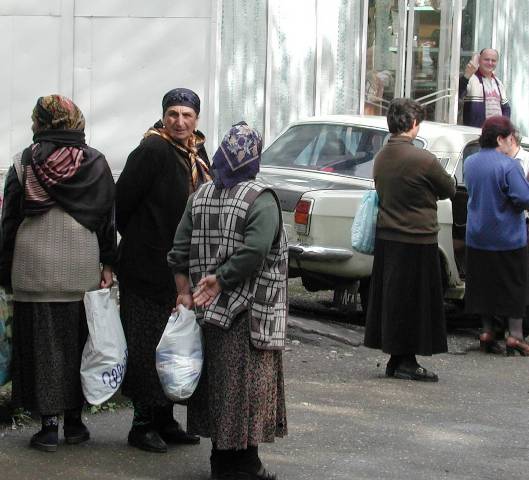
Being with my daughter’s family for this special time of
year, I think that all of us have come to the same
conclusion: family is important and our differences are not
(although we honor those differences).
To end our stay in America, we fly to Pittsburgh on Friday
and on Saturday, Anne and I celebrated our 45th anniversary,
high above the city and its lights on Mount Washington.
Below is the meeting of the three rivers, Phillip Johnson’s
glass masterpiece of the PPG Center and memories of earlier
times when all of us were young. Lou, my brother in law, and
I ate at the Oyster House on Market Street, across from the
market where my grandfather sold fish. It is a place where
my father took me many times. They still make the largest,
most delicious fish sandwich in the world. The waitress is
still a “smart aleck” but now quite old (ancient, in fact).
Memories of good times flood my mind. Why is it as we age
the good times prevail in our digital memory unit, the
brain?
The anniversary dinner is paid for by Anne’s sister and her
husband, Lou. It is expensive, over $150.00 for the four of
us, but I wonder if Georgian prices are coloring my vision.
This is the beginning of a journey back to Georgia. I now
places in the mind’s file case our American visions and
compare them to Georgia.
On the way back, I find that travel is not as much fun as it
once was. Security is high everywhere now. I am searched
three times, twice by taking off my shoes. There is a
tension in the air. People are afraid that they will make a
mistake and they make mistakes. One couple on the plane got
very upset when an Indian couple changed seats, with the
permission of the stewardess, and he had to sit beside them.
Another man who saw the interchange gave up his seat so that
they could sit together but the first man was still uptight.
While relaxing on the airplane, I ask myself, “What had been
accomplished on this stay in America?” Rest is the first
answer, while relaxing the inner life as well as the body.
We viewed three exceptional movies. I cataloged, cropped and
enhanced all my photographs from Georgia and created several
slide shows for the computer. I played with my new visual
computer toy, which I will turn into paintings on arriving
back in Tbilisi. Mostly I go back to Georgia refreshed,
knowing what must be accomplished and ready to do the work.
On the nine hour flight from Detroit to Amsterdam, I find
that time is a subjective dimension. An image flashes up on
the television and movie screen, stating “Ten minutes to the
movie.” Having nothing else to do and nowhere to go, I try
to count the seconds in my head for a minute. I come to the
conclusion that air time is longer than actual time. I
mention this astute observation to Anne, who has a science
background, and she hands me her watch without a word. I
time the minute again. Of course, it is exactly one minute
by the watch. Now with the 600 miles to Amsterdam, I know
that my psychological time is different than real time and I
think, “We do crazy things to pass the time.”
Early morning has become a routine for me, waking with the
sun and the sounds of 1.6 million heartbeats of Tbilisi.
Being back in the city is easier and harder than before. I
have none of the adventurer’s illusions. I will just add to
the knowledge base of a few key players and students which
might make change happen in the long run. Tbilisi is an
overpopulated city with an unemployed male workforce that is
dynamic ready to explode. As I drive the streets with
Raphael and Anne, I see it in the park and at the bazaar. In
the few months that I have left here, I will built the
playground, establish the American art resource library,
teach my classes in museum management, American art and
architecture, and 20th century art criticism,
help the non-governmental agencies and the art gallery
owners to work in a free enterprise world, and create a body
of work to exhibit in “Joe and Friends” in April.
As we stroll along Rustevili Avenue, every ten feet there is
a beggar. Going under the street to get to the other side,
there are mothers with rag doll children in one arm and a
hand out with the other, out of work musicians play for
their hat of coins, and small shop keepers try to make a
meager living. Anne always puts something in an extended
hand. I mention all this because the contrast is so great
when you take your seats in the Opera House. It is always
filled. The tickets cost from 5 lari ($2.50) to 20 lari
($10.00 for an expensive production) but it makes no
difference in the cost. It is always filled to the fifth
tier of seats. Mothers and fathers bring their children. I
am still astonished by this. This image of support will stay
with me when I go back to America. Here are a people who
love art so much that they want their children to love and
enjoy it too. Tonight it is Carmen with, again, a full
symphony orchestra. In all the seats, everyone is dressed
with style. No beggars here.
I watch one man a few seats away keeping time by clasping
and unclasping his giant hands. He is a gargantuan hulk of a
man with layer upon layer of flab and a shape that surrounds
his seat like a snowman. Carmen is arrested and led off in
chains as the first act ends. My giant of a man hangs his
head in despair and rings his hands together. Sitting in
front of him is one of the most beautiful women that I have
seen with clean lines, olive skin and keen appreciation of
her looks and carriage. She holds herself apart. The man she
is with does not fit her therefore I question whether she is
a woman for hire, a bangle on the man’s sleeve for the
night. Sometimes I wish that I could read minds but here I
can read small gestures, lines and actions. It is most
interesting, a play within the opera.
No electricity last night and none briefly this morning.
Across the street, in the Adjara Hotel, the lights are
always on and they never pay any bills since they are
refugees the government puts there. Anne had enough time to
complete one load of clothes before the electricity went off
again. She feels fortunate since the other day it stopped in
the middle of drying and she had to wait eight hours before
she could finish and unload the washer.
Of course, there is no electricity today so we go to the
Embassy (who always has heat, light and electricity). We
went for several reasons but one main one was to retrieve
our bill for our cell phone so that we could pay it. A
normal request. We wanted to pay our bill. It could not be
found. “Well, call the company,” I say, “find out what I
owe.” Simple, right? Simple, no! “They can’t tell you,” I am
told. “Why?” “I don’t know why. Give me a day or two and we
will bill you again by sending a fax to the Embassy.” Did I
mention the answer that I got the other day when calling the
Sheridan Hotel to find out what time Rotary holds its
meeting? I was told in the most serious voice, “They meet
every Wednesday night at 6:00 o’clock if they come!” Well,
to finish the story, after we paid for our cell phone, we
got the lost bill.
We go to dinner, 2:00 p.m. in the afternoon, at Raphael’s
house for soup and bread. We told him to make it simple.
Have you ever had a ten course soup and bread, with extras
of course? Across the table sat Raphael’s brother, Volari.
His face says volumes about the harshness of life in
Georgia. The innocence of Nino, Raphael’s niece, is in
contrast to the weathered face. Her youth is fleeting so I
wish to catch it before it becomes the morning mist and is
gone. The lovely Julia, Raphael’s wife, voices her opinion
about the problems with electricity. “Some days, I don’t
want to live here anymore,” she said. “Everything is too
hard. The lights are out, no heat for days in the winter,
Michael cannot study or go to school when it is this cold
inside, and the corruption keeps it all going. Some say it
is the Mafia of Georgia that sells the kerosene. Electricity
is cheap; kerosene is expensive.”
Volari adds, “This has been a mild winter and yet the
electricity is off when the businesses are opened.”
Raphael’s only comment was “Crazy people.”
When we were in Waco at Christmas time, Anne picked up a
copy of Senior News. Don’t know why she did that since we
are so young but she did. On the back of the section for
which she picked it up was a letter from a 75 year-old man.
He writes: “We are, considering the alternative, reasonably
content with the burdens of functional obsolescence, such as
the immediate transfer of desserts to bodily blubber, the
nearly as immediate metamorphosis of most foods from solid
to the gaseous state, the graying and decaying above the
neck, and the widespread deterioration below it.” I still
chuckle at this old man’s words. I am so young, a mere
sixty-nine, yet I empathize with his words.
February: Letter from Tbilisi:
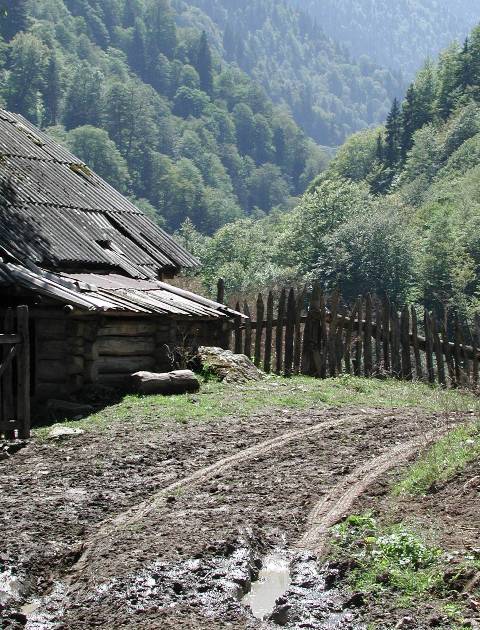
One of the reasons that I wanted to come to Georgia was to
see wonderful examples of Byzantine and Georgian
architecture of the 11th and 12th
century. In front of an ex-hotel which the Russians built,
in the center of Tbilisi, now filled with poverty-stricken
IDPs (Independent Displaced Persons, who are different than
refugees who come across borders), stands the grand statue
of the Bagraid king David II Aghmashenchechi (1089-1125).
Each time we pass, my driver Raphael points out how he,
although only 16, defeated the Seijuk Turks at the Battle of
Dadgori in 1121, ushering in Georgia’s golden age of
architecture. This period was short-lived for the Mongols
came sweeping through the South Caucasus in the 12th
and 13th centuries. What followed are the Ottoman
Empire and the Persian invasions, interspersed with brief
period of freedom, and then the iron grip of the Russians
from the 18th century to 1991. All that one can
call Russian utilitarian structures is “concrete ugly” and
the worst form of architecture for humans to live within.
The hotel behind the statue of King David is a good example
of bad architecture and Georgians shake their heads because
the Russians left many examples of that.
On the hill, grandly overlooking the city of Kutaisi, stands
Bagrati Cathedral, a church built in 1003 A.D., destroyed
many times and rebuilt. There is a long winding, cobblestone
road to the church which is walked by the citizens on holy
days. We walked it when the yearly procession of the
Madonna’s icon, the city’s official relic, is taken to the
church. Standing in the services, the sky as the only roof,
you feel like you are in grand open air Gothic cathedral,
although the rounded arches tell you this is pure Romanesque
architecture. In this structure, you can see the improvement
in opening the walls with arches when contrasted to the
Kharagauli church built in the 8th century where
the structure is more closed in although the cupping out of
space has begun. Frank Lloyd Wright calls architecture “a
womb with a view”. The close space and semi-domes cupping
out cave-like areas of the Romanesque style do give a
feeling of sheltering comfort. Anyone thinking about it
knows that “mother” is the first home, the cave follows
shortly, and then constructed structures to keep out the
elements and retain warmth and coolness.
In Eastern Georgia (Bagridi Cathedral was in Western
Georgia), Georgian homes from earliest times had roofs which
tapered into a central hole which let light in and smoke
out. This design, the darbuzi, may have been the origin of
the central-domed churches so typical of Georgia. In “old
town Tbilisi” these churches still exist is wonderful
condition.
Therefore it was with great interest that I went to see
Victor Djorbenadze’s “Wedding Chapel”, on the left high-bank
of the Kura River in Tbilisi. Rolf Gross makes the
statement, “Victor Djorbenadze was one of the remarkable
architects of the end of the 20th century…the
Wedding Cathedral shows him to be one of the great
architects of Europe, with a sophisticated architectural
brut, which orients itself on Le Corbusier and Frank Gehry.”
That is high praise indeed. Le Corbusier was the main
architect of the International style which made the glass
buildings of New York, Dallas and Houston possible and Frank
Gehry is the originator of the revolutionary Guggenheim
Museum in Balboa, Spain.
It is a miracle that this work of art was built at all.
Djorbenadze was a homosexual in a culture where that is
unofficially condemned. Fortunately, he was backed by Edward
Shevardnadze, present President of Georgia but then chairman
of the Communist Party (a act of courage on Shevardnadze’s
part because Djorbenadze was not a member of the Party). The
castle-like outside, sheathed in limestone facing, is
spectacular but the inside is purely Georgian with rounded
curves (similar to Georgian letters and the Georgian love of
“mother”). When asked about the floor plan, Djorbenadze
confessed that the female reproductive system was his basic
form.
Djorbenadze’s cathedral has been somewhat ignored today
because of the Georgian justifiable dislike of anything
“Russian in design” but this building, although built under
Russian rule, is pristine Georgian. Looking up into
cross-wise overlapping wooden beams that form a “false
dome”, one is reminded of those early cone-like structures
of Georgian farm homes (which can be seen at the Tbilisi
Open Air Museum and in Miskheta). Victor Djorbenadze died
forgotten and disparaged in 1999. The neglected Wedding
Cathedral is slowly crumbling. As Rolf Gross writes, “There
is nothing like it in the former Soviet Union”. But as a
wedding cathedral, it may have seen its time. There are too
many unpleasant memories of the Communists repression of
Georgian Christianity. Georgians are returning to their
traditional churches for services and marriage (as it should
be) but it is time to rehabilitate the man and find a new
use for this original and remarkable work of art.*
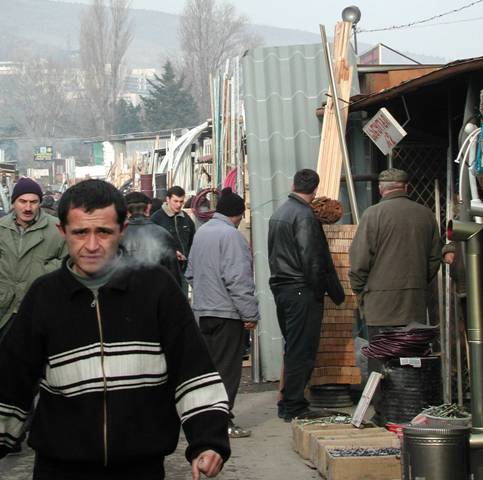
Internet source for images:
http://vdjorbenadze.tripod.com/WC02.htm/WC03.htm
* Typical in Georgia, instead of the government finding a
use for this national treasure, they sold it in 2002 without
a public bidding system to a Georgian millionaire who made
all his fortune in Russia. He is now living there and has
made it his home. The Georgian people are kept out by steel
gates and machine-gun armed guards. The more that this
society changes; the more it stays the same. This is the way
it was done in Communist times.
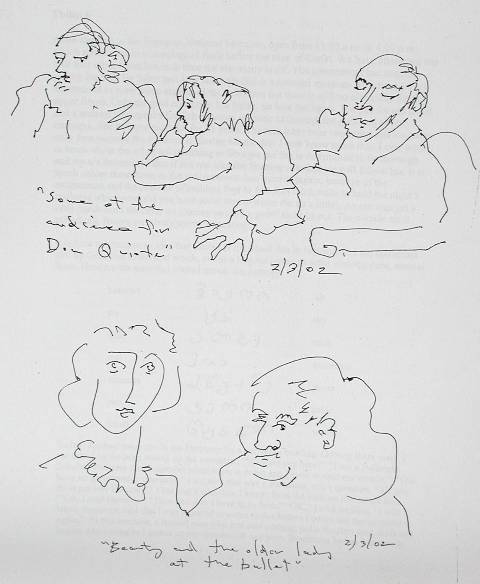
March: Letter from Tbilisi, Georgia:
This is one story in a nation of stories.
Just up from one of the two McDonald’s restaurants (with a
happy Ronald McDonald in full color sitting outside with his
hand raised to greet the many patrons) is an old cobblestone
street with houses behind large steel doors and an
atmosphere of stepping into the mid-19th century.
My co-teacher, Ketevan Kintsurasvili, who shares a class in
Modern Art and Criticism with this American Fulbright
Scholar and allows me to call her Katie, had asked Anne and
I to join her when she went to visit the studio of the
Georgian artist, David Kakabadze. His widow Etery
Andronikashvili keeps the spirit of his art alive in this
house. Etery also teaches at the Tbilisi State Academy of
Fine Arts
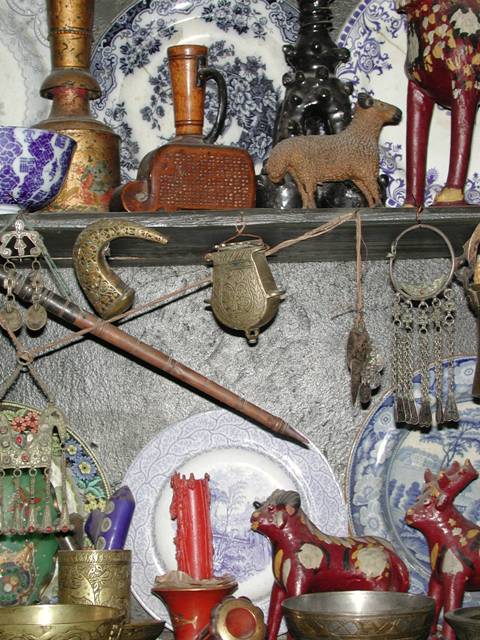
The studio was on the second floor. Etery met us with a kiss
and said, “We begin to see here.” And see we did. A portrait
of her husband done in Moscow in the early 1910s met our
eyes as we stepped into the room. It was of a proud,
straight-shoulder young man with a small moustache looking
assuredly out at the world. Next, we saw his early paintings
of Georgia and his love of the mountains was clear. In fact,
his love of Georgia showed through the paint which was, to
my first surprise, ahead of its time. He bathed the
mountains in color and spirit.
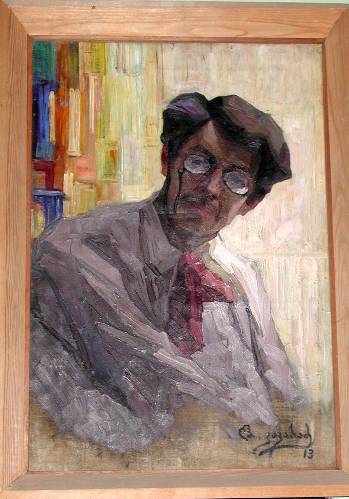
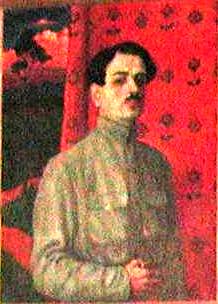
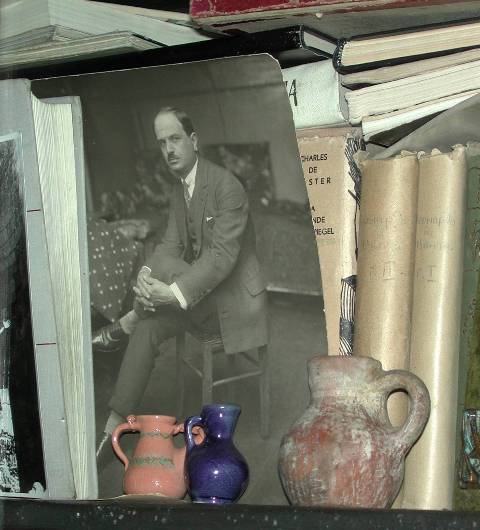
Now came the second surprise. I had journeyed to Tbilisi,
Georgia to learn about the art and its people. All the
research that I did before coming told me that the art was
about 100 years behind the times, black and white with a
little color thrown in and no modern art concepts. When
Kakabadze went to Paris in 1921, he was a leader in the
Cubist movement, exhibiting alongside Picasso, Braque and
Leger. Long before Kandinsky finally came to Paris in 1930s,
Kakabadze was doing biological cubism with images that came
alive under an artist’s microscopic eye. Kakabadze had been
trained as a biologist as well as a painter. His work was
not of cubism but went beyond cubism in its concepts.. The
excitement that his work created, being so far in front of
what was happening in the early 20th century,
made me want to see his studio in the next room. If a man
can create all this from 1921 through 1927, what miracles of
art could he create for Georgia when he returned in 1928?
His revolutionary historian friend who lived several houses
away tried to get word to Kakabadze that he should stay in
Paris. “The Soviet Regime is oppressive and does not allow
any new ideas to flourish in Georgia” was the message. But
the young artist could not believe how bad the situation was
in his beloved country so he returned.
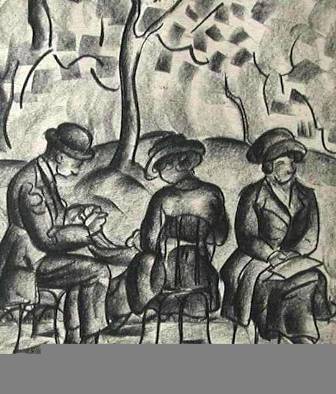
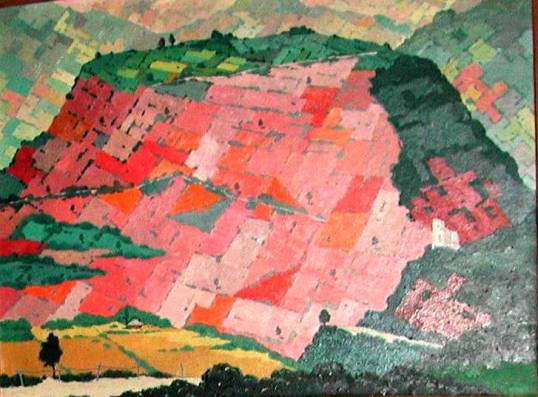
The first thing that the Soviets did was outlaw any painting
of Cubism by Kakabadze or any other modern ideas about art.
Only Socialist Realism was allowed. If a young painter
wished to feed his wife and children, he painted the party
line. It was impossible for him. Cubism kept coming into his
compositions. He had secured a teaching job at the Academy
where I now teach. He was popular and loved by his students
for his understanding and ideas. Yet, he was forced to teach
only Socialist Realism and in 1948 he was dismissed because
he was not a zealot of Socialist Realism. He was banned from
any profession to make a living. He lived from the kindness
of strangers and friends. This lasted for four years until
his heart gave out and he died in 1952. Oh, I forgot to tell
this part of the story. All his students got failing marks
because they had associated with or taken a course from
David Kakabadze.
No American can imagine what this hero of Georgia went
through for his country. He had to silence his ideas about
art (which were beyond their time and at the edge of what
was happening in modern art), give up his teaching and
finally give up his life just because he returned to the
country he loved so deeply. The Communists would not allow
him to leave the country. He was threatened with death if he
spread “modern ideas” to the young. He was blacklisted so he
could not make any living from his talents. In Paris in the
1920s, the American Katherine Drier and her friend Marcel
Duchamp purchased many works by Kakabadze. They are some of
the treasures of the Yale University Art Collection, taking
their rightful place side by side with Picasso, Braque and
Leger. And now in Georgia, David Kakabadze is known as a
great artist, a patriot and a tragic victim of Communism. I
learned that the cobblestone street where his studio, his
widow and Ronald McDonald live is called Kakabadze Street.
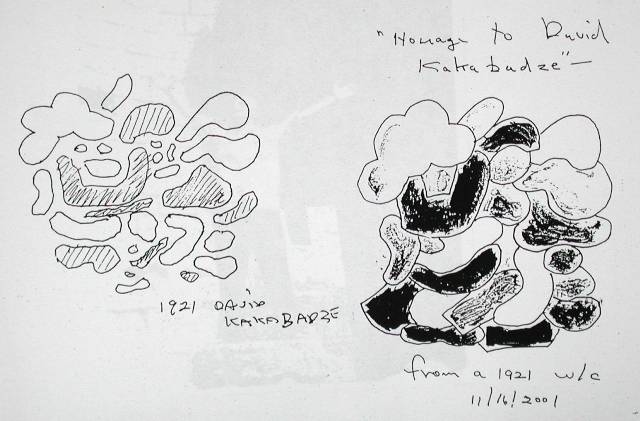

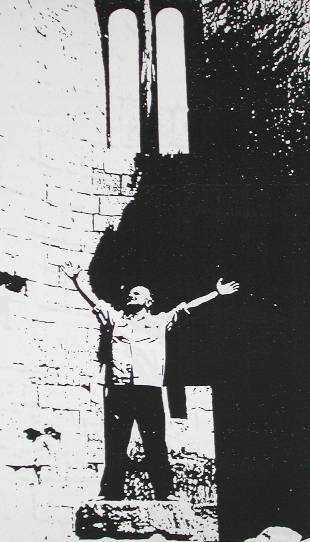
When I journeyed to Rustavi to lecture at Highschool 23
and Rustavi State University, I was impressed that the
principal of the highschool had rallied the community
together and gotten the walls in the school painted. I was
going to turn in a grant which had a component for painting
to be donated therefore I asked her to write me a letter,
telling how she got the walls painted. What I received was
more than I asked for but it was so honest about life in
Georgia that I included it in my journal.
Tbilisi 6
Anne and I go to the Georgian National Museum, open from
11:00 a.m. to 4:00 p.m., which specializes in archeological
finds before the time of Christ. We have attempted this tour
four other times but each time the electricity is off. The
government has stopped paying the bills for lights and heat
although this is a national museum. This time we are
determined to view some aspects of the collection but there
is still no electricity for the upper floors. Only the gold
collection has lights; no heat but lights. We pay for our
ticket and a woman who speaks English consents to guide us
through the gold and silver treasures. She has worked there
for 35 years. The tour takes over two hours and we leave
only then because the museum is closing for the day. I now
know more than I ever wish to know about the art of
goldsmithing in Georgia but she is determined to be thorough
and we are determined that if she can take the freezing
chamber we will follow her. It is much colder there down in
the subbasement than outside (again, because of the
architecture and the practice of building four to five foot
thick walls to hold the night’s coolness which works if you
have some way to warm the air a little). As our legs get a
little numb from the cold, we journey on until a guard kicks
us out. The outside air is refreshing, feeling positively
warm in contrast.
It is time to return to an idea that started at the Black
Sea in September. I am fascinated still by Georgian letters
and words, not as a linguist but as an artist viewing pure,
sensual form. Here are the ones that started me on this
journey:

Today, Raphael takes me to the Embassy
for a computer briefing. Getting there early, I am asked by
the man setting up the computer, “Why are you here?” “I am a
Fulbright Scholar who uses the computers when mine is down
and I need to read my emails.” “You have no government
clearance.” I am sure that was a statement, not a question.
“All you do is get into Hotmail?” That was a question, I
knew, from the look on the man’s face. “Yes, I read
Hotmail.” “Then you don’t have to be here.” “OK,” I said
smiling, “I will leave. Someone said that I was required to
come to this before I could use the computers again.” At
this moment, a second man who had said nothing, pulls the
first man aside and begins whispering as I gather up my
sketchbook and pens. He returns before I am ready to leave.
“I’d appreciate it if you stayed,” he says in a government
tone which means ‘you better’, “officially, you do not have
to but I would appreciate it.” I sit down again, “OK.” You
get used to this in Georgia but as the King says in The King
and I, “It is a puzzlement.”
At the beginning of the briefing, the gentlemen who asked me
to stay begins speaking in “government-speak” with a lot of
IPOs, ISSOs, CLOs, etc. laced with words I understand but
not here out of context. I do not understand a word he says
for the first five minutes but the others in the audience
nod their heads so I know that the briefing is going well.
Oh, I get the gist of the message, “Don’t mess with my
computers or I will slap your hand. Here are my rules.”
The more that we become dependent on technology to do our
thinking the more we think like computers. He tells us that
computers can be scanned from a mile away if you leave them
on (if you have the right equipment, and the enemy always
has the right equipment). With me, the United States
Government is secure in its information. I know no
passwords. I know nothing. I am dependent on others to even
get me into my webpage on Hotmail. Most of what is discussed
is for the hired help. I am the outsider although they
include me in briefings where I get bits and pieces which
never go together. But I did not waste my time. I make
sketches of the audience. I get a lot of information from
him about how not to get information. My drawings are all
about gathering information. From a critical point of view
and as a teacher of over 40 years, I analyze his “non-style”
of presentation. The best that I can say is that it is
boring.
Yesterday, we went to the bazaar to try to find acrylic
paint (since all my paints were not allowed on the airplane
at Christmas because they were on a list of “flammables”,
which acrylic is not, oil paint is). After examining each
booth in the paint section, we found none. We went to Expo
Georgia and the German/Georgian paint company. I found
yellow and white in acrylic (liquid form but I will make
do). Ah ha, they do have the paint in Georgia. I had been
told that there was none here. It is German-made so it
should be good. I have not painted for over a month. My
wrist needed a rest and I did not wish to injure it further.
I will wear a wrist guard if it acts up again. I will tell
Georgian artists that they can find “acrylics in Tbilisi”.
As we pass the machine gun guard at the Mayor’s Office, we
enter a large hall with murals of Georgia’s past in tapestry
form on one wall and scattered groups of people waiting for
an audience with some bureaucrat. The Mayor’s office is also
crowded with those waiting to see him. They turn and
question our presence as the Minister of Foreign Affairs
shakes our hands. I am “the American” and his translator. We
are ushered into the Mayor’s grand office with a layout of
Tbilisi behind his desk. I give him the citation and the
present from the Mayor and City Manager of Waco. He gives me
a view of Old Tbilisi to take back to them. We discuss the
idea of a playground in the inner city. He queries if we are
here to ask for money. When we tell him that we have that,
we want his consent and blessing. With a grand wave of his
hand, he says, “You find the place, you build the
playground.” We leave and the Minister of Foreign Affairs
tells us to call him if we run into any difficulties.
The images of children’s writing on walls in our
neighborhood is put into the computer, enhanced, cropped and
made ready as visual data to use in the paintings. I have no
idea what they say but that is the beauty of the process. In
this case, further knowledge would color the vision of
seeing this writing as pure form. I do not wish to read it.
I wish to use it as visual enhancement for the surface of
the new paintings for the spring exhibition. I will never
see my own language in the same way. I know too much about
it to see it as if for the first time. I wish that I had
thought of this before the December exhibition. On some
paintings, it would have helped. There is immediacy in the
writing that is refreshing.
Sitting at a long table, the Rector, Vice Rector and three
members of the Art History Department sitting on one side,
Sharon Hudson Dean, Director of the Cultural Affairs
Division of the American Embassy of Georgia, Magda Madradze,
the Embassy interpretor and Assistant Cultural Affairs
person and me arranged on the other side, I get a totally
different reception than I have in the three months that I
have taught at the Academy. In fact, I got the royal
treatment with all telling Sharon what a wonderful person I
am and how much I have done for the Academy. This is in
marked contrast to the assistance that I have gotten to make
my job of teaching easier. I believe that it all changed
when I helped at the large meeting for the Rumanian
Ambassador and our lecture on Brancusi. After that, I am an
asset, not just a Fulbright Scholar from America.
The Rector was sure to tell Sharon about the history of the
Academy, dating back eighty
years which will be celebrated in May. It has 1100 students,
mostly from Central
Georgia, but actually all over Georgia. Later, I get to see
locked areas of the Academy
which had been closed to me before this, such as the
collection (which they now want me
to catalog). I tell them that I will use my students, train
them, and begin the process but
the job is something which will take several years (and I am
leaving, for sure, in May). It
is a nightmare of a collection. They have just left it sit
for 10-12 years or longer with no
covering to keep out the dust and no temperature and
humidity control. There is dust,
dust, and more dust over everything. I did get a promise
that all students would use the
American Art Archive Collection if I attempted this
impossible job. I do trust
the people I teach with in the Art History Department. They
want to have this dream
come true. Next Tuesday, we decide on a room for the
American Collection. Next Friday,
I start on the Academy’s cataloging nightmare.
I spend two days interviewing candidates for the Junior
Faculty Development Program to send Georgian faculty to
America. It is administered by the American Council. Over
the two days, a Georgian professor and myself thought that
we had six top candidates, out of twenty-one, for four
positions. The final decision will be made in Washington.
One excellent faculty member who teaches film and acting
told a story about finishing her movie which was praised
finally at the Cannes Film Festival, Moscow Festival, St.
Petersburg International Festival and the Kiev World
Festival. She told a story about making 15 to 16 films a
year in Soviet times, with the backing of the Communist
government (not everything was bad then). Now in the last
ten years, only six films have been created and she did two
of them. The Georgian government has put no money into a
film industry which was world class for years before the war
for independence. We asked her, since she was applying to
study arts management in America, how she got her film
finished that won so many honors. She said, “I went to all
the sources that I could find but for two years I had no
luck. Finally, I found a man to back my film.” Naively, I
asked, “And he was a patron of the arts? In the States, we
call that ‘an angel’.” “No,” she said with straight-forward
honesty and a serious look, “I sold my flesh.” I glance at
my co-examiner and she did not make any reaction to this
statement. Obviously, she has heard stories like this
before.
After that, I would have given her any scholarship to
improve herself and her exceptional art. There must be
stories like this all over Georgia. My partner just shook
her head, “Yes,” and went on to the next question as if the
young woman, age 50, had said, “I received a grant which
took two years to successfully obtain!” This woman is a
survivor where survival is king and queen and pawn and
everything. Americans cannot understand the dignity with
which this lovely, strong, courageous woman said, “I sold my
flesh.” How many artists would give up something that
precious to pursue excellence in their art? She saved her
inner soul and her inner dignity as an artist and a person
but she sacrificed something too. Selling your flesh is not
something which should be looked upon as degrading but a
statement of strength in this case to move into the future
with her head high. Was I impressed? More than words can
ever say; more than anyone will know. She said those words
as if they are normal and matter of fact but each word is
filled with resolve and purpose. It says, “I will anything
for my art. My inner being is more important than my body. I
will do what needs to be done and will move on.” Her film
won an award at the Cannes Film Festival but for me her
greatest reward is her resolve to create something personal,
yet a film that transcends the individual to a universal
statement.
Now it is early Saturday morning and the sun bites through
the mists of a coming storm across the hills which roll down
to the ugly apartment buildings. The statuesque churches and
Mtkvari River look cold in their stillness. The wind rips
through any garments and if one takes off gloves your hands
instantly freeze (it seems). It is a Tbilisi cold, the kind
that cuts to the bone. There are three min-buses filled with
children and Embassy personnel driving toward the mountains
for a short ski vacation.
As we drive over uneven roads, the hills topped with snow
act as a frieze to the valley. The names tick by: Gori,
Alkabori, Ksani, Batumi, Sukami, like minutes and miles.
Ahead are the storms which are foreshadowed by the blurring
of the mountain tops as we drive toward Borjami (the place
of the mineral waters and the beginning of the “high hills”
which I call mountains). Nothing is a “mountain” unless it
is part of the Caucasus. As we drive into the foothills, the
ground is covered with virgin white six feet of snow. It
gives a visual meaning to the naked trees, dark houses,
silhouetted poles, brown weeds and a glimmer of grass that
seems to litter the landscape. Only the road is somewhat
clear but only for a time in this sea of white. The snow
drapes itself around the landscape like a royal robe.

Now the wet road is no more, just part of the whiteness and
more snow is falling hard. We are only halfway to the
mountain resort. If it keeps up at this pace, we will be
forced to turn back. Inside the van, it is warm and the
scene of beauty keeps our attention off an important
question, “If it gets worse, will we make it?” I am not the
driver who knows his job so I shelve that thought and
concentrate on the white scene which takes on its own glory.
On the side of the road a man stands waiting. For what, it
is not clear. In the streets of Tbilisi many men wait and
know not what for, except a job anywhere, doing anything.
Horse-drawn carts move slowly along the same white opening
between the fences and the trees. Merchants are still open
on the roadside, bundled against the blizzard that has now
evolved. We follow another mini-bus, pass stalled cars and
buses, but our movement is slow now. Suddenly, the three
buses stop at a rest station. Men and women run to the
bathrooms. The tile floor is slippery from the blowing snow
and the stalls are covered with layers of the new whiteness.
The sun is attempting to come out. It is clearing. We will
go on. The ice on the windshield is beginning to melt.
It is clear now. You can see the tops of the “high hills”.
The roads are still all white but the view of our
surroundings is crested by a muffler of soft mist. We drive
through sentinels of trees in stark contrast to the gray
“hills” beyond. The snow still falls and there is no
indication that it will stop but we know that we will make
the resort. Below in the rushing stream, a sole fisherman
stands thigh-deep in the freezing brown waters. On the other
side of the road, it drops off to a white field. Now we are
in the valley of the “high hills” with icicle-dripping rocks
on one side and the stream on the other. The road has become
a war zone of pot holes and small craters. Our driver is a
master of navigating this course. This is the same road that
we drove when we went to Kutaisi in August but it looks
different in its albino coat.
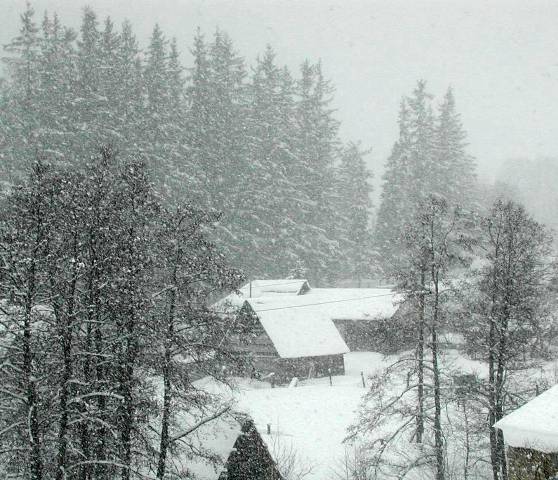

We climb and climb the high hills until three cars block the
road. Our drivers get out and help to move the stranded
cars. The snow at our sides is now four feet deep and mostly
untouched by human feet. Now, we step into the warmth of the
resort, the falling white snow, the shadows on the rolling
mountains and the silhouettes of houses, trees and people
are a black, white and gray painting by Whistler outside the
windows. It is one of his winter nocturnes. Snow purifies
the land. It gives it a cloak of ermine. As soon as we
arrived, we eat a simple meal. Tonight, it will be the same
at the Bakuraini Ski Resort.
When morning comes, pink mixed with a beginning blue emerges
over the Eastern rim of the Bakuraini Mountains. There is a
stillness here that the city will never know. The pace is
natural and normal. The beginning day is quiet and reserved
like an elderly gentleman rising with the sun. It is snowing
gently now after our walk to the village. The room is
painted stark white. We were instructed when we prepared for
the trip to bring sunglasses but I did not know that it was
for the indoor glare. The gentleness of the snow is now
heavy. The distant mountains are lost in flurries and white
fills the picture frame of the window. Our indoor world is
soothing and warm.

I
Today, we are leaving. It is blue skies and dripping
icicles, which at noon the proprietor knocked down with a
broom handle. We walk again over the white road, being
passed by cars, a man on horseback and horse-driven sleighs.
Every few minutes a snowmobile bounces up or down the road.
Taxis without chains and buses with them pass. Downstairs,
when the proprietor counted out the money from the Embassy
representative, he is unsure whether to give a receipt that
American Embassy needs for their records, a paper trail. The
man wants no paper trail for the Georgian government to
follow. This is true all over Georgia, a suspicion of
anything that could be used against them. Small corruption
like this man is showing is a survival technique. It is not
up to Americans to judge as we do not live here all the
time.

April:
Letter from Tbilisi:
It has taken me a while but I have come to the conclusion
that there are two centers of life in Tbilisi. There is
Rustavili Avenue, the six-lane Broadway of this city of 1.6
million people. In terms of many cities in the world, that
does not seem like a lot of individuals living in the same
place but this is a country with a population of 3.5
million. Rustavili Avenue is the tourist center and young
people’s gathering place. All the theaters and most of the
upscale restaurants border its sides. Its main architectural
symbols are the multiple rounded arches and the refuge hotel
behind the statue of King David on the turn-around circle
for traffic. The arches were the Soviet way to signify the
center of commerce. Now the arches houses a restaurant
called Montmarte. The “refuge” hotel is a continual eye sore
for Tbilisi, with the plywood partitions enclosing the
balconies and laundry always hanging from the metal fences
and windows. “Refuge” is not the correct term, although it
is used by visitors and citizens alike to describe the
place. Technically speaking, a refuge is someone who comes
from outside the country and is given asylum. These are
“displaced persons” from northern Georgia where the battle
still wages on who owns that region. The Georgian government
claims Abkhazia as part of Georgia, Abkhazia wants it as
their own country, and Russia says that it is still part of
their empire. Most of the terrorists who plague Tbilisi and
Russia come from this remote mountain region. Also this is
the region where the Russian have been bombing in recent
months in their “war on terrorism”. Russia says that this
northern Georgian region is the haven for Chechen
terrorists. On November 27-28, two Russian military jets
SU-25’s and four assaulting helicopters MI-24 broke into
Georgian air space, pounded the mountain slopes of Pankisi
gorge. Rustavili Avenue is dangerous after dark we are told.
The American Embassy of Georgia put out an alert about a
threat to all Americans in Tbilisi of kidnapping in October
and another alert after a German diplomat was murdered in
December. During the day, this area is alive with citizens,
paying bills at the telephone building, walking the streets
to look in shop windows, buying things from street stays and
of course getting a Big Mac from MacDonald’s main
restaurant.

But after you get to know Tbilisi better, you find that the
heartbeat of business, commerce and shopping is not in this
city center but the other one across the river, Tbilisi’s
largest bazaar. The bazaar is roughly three to four square
miles of open-air stands that sell “everything” from food to
the kitchen sink. I mean literally kitchen sinks, bathrooms,
plumbing supplies, hardware, tape, paint, wire, lumber,
plywood, food and anything else Russians, Turks, English,
Dutch, Georgian, Greeks, Germans, etc. wish to sell. My
driver, and in Tbilisi you must have a driver for protection
as well as transportation, Raphael, takes me to the bazaar
for whatever is needed in our daily lives. We break a
connector on our commode. Go to the bazaar. Need material to
put up an exhibition of art. Go to the bazaar. Need clothes.
Need daily things. Need food. Go to the bazaar. Surrounding
the bazaar, starting early in the morning, are men looking
for work with their signs and tools lined up beside the
road. The bazaar itself is a labyrinth of shops. In fact,
sometimes two or three shops are in the same space and only
when you pay do you understand that it is run by more than
one owner. The walkways are dirt. There is no protection
from the weather. To find what you need, you must take the
time to stop and look at each place, each object for sale,
while walking the winding, narrow passageways. Actually this
bazaar is three bazaars, one for food, one for small objects
and one for construction materials and large items. There
are no signs telling you what is where so you must allow
time to shop. It opens at about ten in the morning and
closes when the sun goes down. It stays open in all kinds of
weather in every season of the year. If you come when it
opens, you can watch merchants shoveling potatoes from the
back of large, enclosed trucks into canvas bags and then
marvel at shoppers who somehow tie on top, on the side, and
cram produce bags inside overloaded cars. They come from
Tbilisi or nearby villages. Whole families come and whole
families sell the wares. It is life at its elemental base
with some luxuries for those with the money to buy.
Merchants know a foreigner by how we shop. We are infrequent
shopper. Three or four times a week, the average citizen
buys at the bazaar. Almost all the time, it is less
expensive than shopping along Rustavili Avenue. Also, there
is little danger because it never stays open at night with
its limited electricity and no bathrooms. But if you listen
carefully as you meander through its maze, you can hear a
heart beating. It is the people’s commercial organ of
Tbilisi.
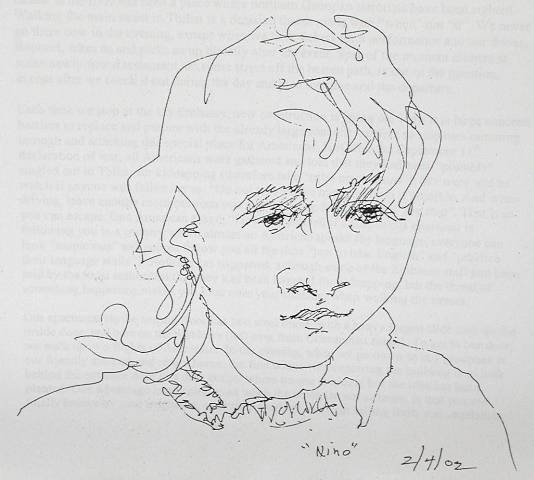
One thing about living constantly with warnings about
kidnapping, bombings and other dangers, you begin to think
in these terms. As an artist, my problem and talent has
always been that I could imagine all kinds of things and see
the images with crystal clear vision. When the image is a
nightmare, that makes it more difficult to dismissed
(particularly when the event is something triggered by CNN
News on the laptop).
One Drop of Blood
Waking early in the morning, which is the pattern for my
sleep schedule in Tbilisi, I lie a moment, thinking about
the strange dream that still slips in and out of my
consciousness. I was the bureau chief for a national
newspaper, newly positioned, and I sent out a correspondent
to get a story. It gets a little cloudy in terms of the
detail from here on when I try to place myself in the
correspondent’s body. What is clear is the next scene. I am
sitting under a large, gnarled old tree in the courtyard of
a small town in the Middle East and a drop of blood appears
on my hand. As I look up, I see the body of the
correspondent in the limps of the tree. Somehow the person
who killed him placed the body there for us to find. Only
one drop of blood came from the body but it was enough. I
sent off another human being to get a story and he became
the story. Even the murderer knew that. He sent back the
body to tell the world that this is what happens to
Americans who come to this part of the world for stories.
They become the story.
On waking I returned to CNN on my laptop. In Tbilisi,
Georgia, we have no television or radio. In the last eight
days, the electricity has been off each day more than it has
been on so television or radio is not a sure source of
information. And even if we did have electricity, all the
news is in Georgian therefore no television, no radio, just
internet. Shortly after the abduction of Daniel Pearl, the
Wall Street Journal reporter, who was kidnapped in Pakistan,
the US Department of State sent out one of its periodic
warnings to alert all Americans about the danger of
kidnapping. In three months in Georgia, it is the third
warning, with one briefing to go with the printed word. The
message is clear, “Do all that you can to not become a
kidnap victim?”
You wonder at time if those announcements are really for us
or are our government’s way to say, “We told them to be
careful.” In the normal course of events, you make contacts
with individuals in the country where you are staying.
Daniel Pearl came to the Middle East to fill out a story on
the terrorist Richard Reid. He had to make contacts. That is
how one gets a story. He contacted a man named Bashir, who
it was found out later to be Sheikh Omar, a terrorist leader
in Pakistan. The contacts were simple: emails passed back
and forth. One from Bashir read, “I am sorry to have not
replied to you earlier. I was preoccupied with looking after
my wife who has been ill. Please pray for her health.”
Pearl consented to meet Bashir outside a restaurant and he
was kidnapped on January 23. I noticed that the Olympics are
the lead story now on CNN and Pearl is secondary news. Yet
he is still a story in the making. What will propel Pearl
into front page news again is that one drop of blood.
Even the kidnappers know, like my killer in my dream, that
the real story is America’s concept of the value in a single
life. We do hold some truths as self evident. One of them is
that American life and American freedom is precise. Pearl
was not kidnapped as a person but as a valued pawn to play
on some global chessboard.. Yet once he was kidnapped, other
Americans value Daniel Pearl as an individual. If Pearl had
gotten his story about Richard Reid’s connection to al-Queda
and bin Laden, he would have had his reporter’s byline at
the top or bottom of a story. Now it is clear that he is the
story.
We value one drop of American blood. We value human life in
a way that is strange to many in this part of the world. As
I teach American art to Georgians, it is critical to teach
American values and American democracy. The work of art is
only the story when the artist is less famous than his
painting or sculpture or performance. I teach about Texas
artists who become the story when they are seen in the
larger picture of American values.
To live abroad, you are constantly reminded by other
Americans and by the Department of State, “You can become
the story.” But how is anyone know if the person following
you is a terrorist who is targeting you for kidnapping or a
friendly person just interested in improving his English?
Americans cannot conduct daily life abroad in fear and there
has to be some degree of trust. You wish to keep your
humanity alive no matter where you are. Especially after you
learn that a contact has a wife who is ill, has children
that he loves, and wishes to call you, “Friend”. But trust
is difficult and takes time when there is the threat always
of one drop of blood. The problem is, when looking for a
story, time is not a luxury that a reporter has. The bureau
chief wants it while the story is hot.
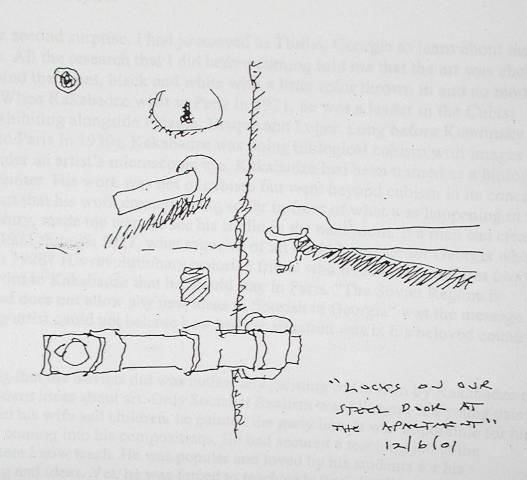
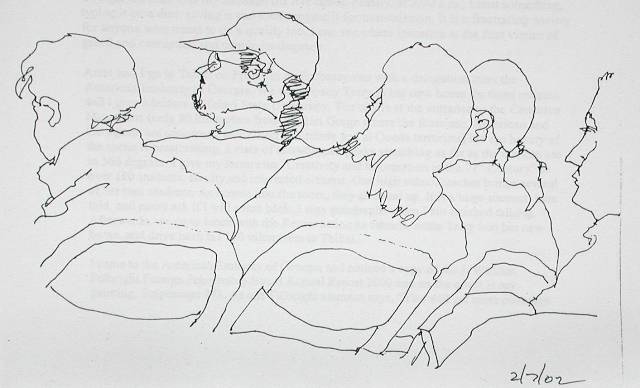
On way to dismiss nightmares is to stay in bed awake,
snuggling in the warmth when the cold is all around. Also at
times, logic is not the best companion for a Fulbright
Scholar.
Becoming 70 or What’s The Difference Between A Duck?
I woke up considering the fact that I was growing old. I do
not consider it much of the time but tonight I did.
Normally, I wake up about three o’clock and Anne turns on
the light to read. We don’t stay awake long but it happens
as you grow in years. Tonight I said, “I am going to stay in
this warm bed until May and then get up to go dancing with
you for my 70th birthday.” She kind of turned my
way, rolling her eyes to the heavens when I get into one of
these moods, and said, “You have too much to do on your
Fulbright before May.” “No,” I said, “I am going to stay in
bed for weeks on end, just snuggling against your warm
presence. Your skin is so wonderful and fresh.” “Have you
seen the age spots on my hands?” she asked. “No,” I
answered, “you are always YOU to me.” “That’s not logical,”
she replied as she turned a page in her new book. “Logic
does not interest me right now,” I smiled, rolling on my
side. “It is a myth that someone else created, probably
someone in their teens. I feel like asking questions about
the universe tonight like ‘What’s the difference between a
duck?”
Laying there in the warmth, I dismissed the notion that I
would ever have to get up again and began to consider the
uselessness of logic to mature citizens of the world like
myself. Logic was invented for the young. If x happens then
it follows that y will happen. If I make an appointment, I
must keep it at the time and place that it was made. That is
not the thinking or actions in the South Pacific. They get
up when the sun rises or not, and go
to sleep when the moon shines or not. It is the style of
life that we have found in Georgia. As one Georgian said to
me, why should I pay taxes or tell the government what I
make, it is corrupt and will put the money in their own
pocket? I tried to consider this logically but was
frustrated by the fact that the same individual complained
about not having electricity because the government could not afford it in
winter. That is when he mentioned the line about telling the
government about his income.
It is may be logical that to make a living you have to get
up and work. But tonight, in the warmth of this bed, with
the heavy Georgian covers holding off the chill of the
outside cold, it is enough to think about staying here for
weeks on end. It is not logical but it is the moment and it
is enjoyed.
I live in an illogical world, which sometimes borders on
insanity. War has been the prime movement of the 20th
century and the way this century is starting, it is the way
that the next 100 years will precede. During the First World
War (and aren’t all wars events that impact the whole
world), a group of artists, poets, writers and thinkers got
together in Zurich and started the Dadaist Movement of art,
which was based on illogic and was a protest against the
craziness that they saw happening in Europe. They would have
been happy with my question, “What’s the difference between
a duck?” Their answer may have been, “One of its two of its
feet is webbed.” I know that the answer makes no sense. It
is not logical but life is not logical much of the time.
I was born to die. I was born to live. Both of those
statements are true. It is not logical.
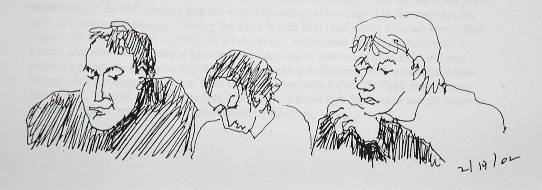
Love is not logical. I have had 45 years of a honeymoon
which has never been logical but is filled with love. Should
I run and get a divorce because love is not logical? The
woman that I married so many years ago, that I still enjoy
in the warmth of our bed, is forever “her”, not young, not
old. Art is not logical as a profession. Much of the time
you work and the only rewards are the satisfaction of
finding and exploring something new (many times yourself).
If I were logical, art is not the first pursuit of life. It
is my life though. It is not only a pursuit but a passion.
When people tell me that I “must”, “should”, “consider”,
“be”, “act” something, I want to call out in the loudest
voice possible. It is a voice not held back by age or
infirmity, even when those things are present. I call out,
“Sancho, bring me my sword, my spear and my shield, I just
dreamed the impossible dream. I will stay in bed until I get
up and then ride the winds of adventure. Age be damned.
Logic be damned.”
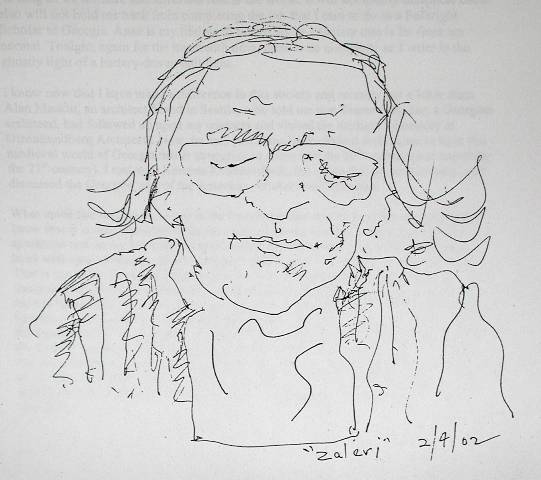
Another bad wind that keeps us awake, another nightmare
about security is all that the morning brings. Most days are
routine and that makes them safe. Some mornings, it is
important to write out the dream, to objectify it, so that a
normal day can proceed.
Drown, Swim or Fly
The wind crashes, seeming to lift the tin from the
surrounding garage roofs, rattling old skeletons of memories
that were hidden deep in the subconscious, and furiously
blowing away the last opportunity for sleep. Our second
floor apartment in the heart of Tbilisi, Georgia is at the
center of some demonic wind tunnel, coming in rushes of
sound, attacking the three foot thick walls as if they were
paper. In all this cacophony of sound, nightmares about
security rush in on the winds of the mind. I dreamed of a
scene as if from an Oriental Godfather movie with dark
figures in long coats (seen too many Matrix movies) invading
the apartment as if they though our two steel doors were
only tissue paper protection. I know now as I awake that it
was a nightmare but my artist’s imaging made it crystal
sharp and vivid. Writing is my way to put the demons into
the shadows. As long as we are here and terrorism roams the
world, it will not totally disappear but it also will not
hold me back from completing the job that I cam to do as a
Fulbright Scholar to Georgia. Anne is my lifeline to
normality in a society that is far from my normal. Tonight,
again for the hundredth time, there is no electricity so I
write in the ghostly light of a battery-driven half light.
I know now that I have made a difference in this society and
recently got a letter from Alan Maskin, an architect friend
in Seattle, who told me that Temur Jorjadze, a Georgian
architecd, had followed up upon my contacts and visited the
daylight laboratory at OlsonSundberg Architects. Now, he may
just bring back modern techniques to light this medieval
world of Georgia that is struggling to come into the 20th
century (and hopefully the 21st century). I met
with Ketevan Kintsurashvili, my co-teacher at the Academy,
and discussed the Georgian part of the American Art Archive
Collection.
What made this nightmare so real is the knowledge that it is
all possible (even though I know that it is very
improbable). In my dream, I awoke to several black figures
in the apartment and on my work table where I create the
colors of joy is a severed Oriental head with eyes wide
open, which turns as I walk around it. I can still see it
now awake. That is the curse of a visual photographic memory
that can pull any vision, real or imaginary, up from some
deep place to explore its possibilities in the light. You
cannot control the images that blow in like this wind from
the subconscious. As long as we are in Georgia, we will
never feel completely safe (in fact, that is the tale of any
traveler after the September 11th terrorist
attack in New York) therefore images that are conjured from
the deepest imagination will appear. I have not had this
kind of vivid nightmare since I was a child and now I push
seventy from the lower figures. I know where it comes from
as a mature individual and why it appears but that is little
consolation and it does not make the image disappear. Maybe
I am feeling the pressure of time- so little, so much to
accomplice.
The wind has not stopped as I write in this strange, clouded
light. It blows the demons of the imagination to the
surface, rattles the basic fabric of reality and reminds us
that man and man’s mind is a leaf in a whirlwind of crashing
sound and invisible power. Then again, it just might be a
Harry Potter night of youthful imagination. They call it
“second childhood”, I believe, and the scary parts of the
night wind will blow away with the gentle March winds which
come on Friday. It makes me chuckle at myself to see how
this gift of the imagination can twist a nightmare into a
child’s fairy story and, of course, visa versa.
As I write, my companion, like every night about this time,
5:00 a.m., is Coke and cookies. Maybe I am back into
childhood- so blow wind, the morning sun is coming and your
time is short. I sympathize with your fury! My heart’s mind
reaches out to your measured existence. So blow, blow and
“do not go gentle into that good night”.
The other day at breakfast Anne said to me over bread,
cheese, yogurt and fruit with, of course, our bottled water,
“You are eating dates, raisins, tomatoes and cucumbers which
you have not eaten in our forty-five years of marriage. What
is the difference in Georgia?” After a moment’s reflection,
I told her what could be advice for any Fulbright Scholar
who finds himself a stranger in a strange place, “In the
land of the sea, you drown, swim or fly.” Tonight, I thought
that I might be drowning but this journal kept me afloat,
along with the warmth of Anne’s body beside me.
It is the small intimate things that hold off the rushing
wind and the vivid nightmares. It is these things which seem
so fragile that endure.
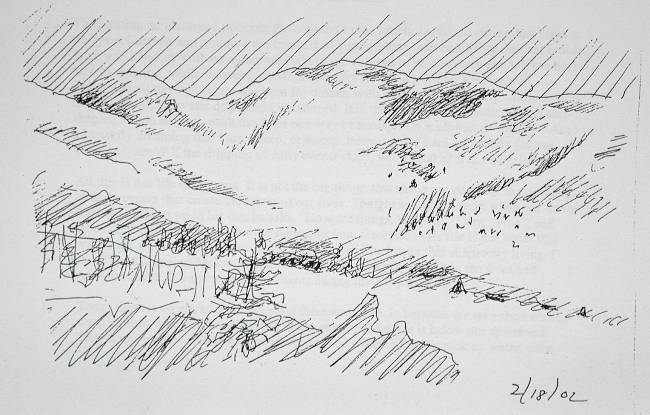
What brings you through some days when the language gets
to you, or the traffic, or the lack of schedules, or no
electricity, no gas, no water, and no message from anywhere
telling you why, is the small things. No Fulbright Scholar
can exist without the small wonders that make up some days.
It’s the Small Things that Shape Us
Tbilisi, Georgia: We went out tonight to our favorite
Georgian pizza place. We had three beers, a small bowl of
garlic bread, Capri pizza for me, and pasta with spinach for
Anne, all for $15 USD. As I ate the pizza, enjoying the
olives and the artichokes, I thought about how the small
things in life shape our existence. It is not September 11th,
or the putting together the American Art Collection here as
part of my Fulbright grant, or building the first playground
in Tbilisi with the help of B. Rapoport, or teaching my
classes at the Academy, or the work with the
Non-Governmental Organization’s and the art dealers, or the
chance to paint and show in national exhibitions, or
attending ballets, operas and shows. It is all of that plus
olives and artichokes. I think that I have come to the point
where I am a rock where water is slowly (and in the case of
9/11 quickly) dripping to shape my existence. We cannot
change the shape that we take in a general sense although we
can open new currents of water and the pace of the dripping.
I cannot believe that my shape is predetermined so I fight
against the dripping of the day-to-day and try to shape my
own existence but I know that in one sense my struggle is
futile. Maybe that is why I keep the day-to-day journal. It
records the dripping and the shaping. And in the recording,
the observations, I step outside the action and shape the
inner life. As the king says in The King and I, “It is a
puzzlement.”
While eating an olive and noticing the contrast to the
artichoke, while sitting last night at the opera Carmen and
noticing the contrast of a gargantuan man engulfing the seat
beside Anne and a beauty with an aging man where she seemed
to be elegantly playing her host for this evening, while
tediously cataloging books for the American Art Archive
Collection all day before we went out for dinner, with
having no electricity while writing in my journal, the
water drips and I am shaped. It is the recording, the
noticing, the self-shaping which helps to push the drips one
way or another. Or is all this an illusion? Am I a butterfly
dreaming that I am asleep, or asleep dreaming that I am a
butterfly (as the Chinese query)? If the dripping of daily
events stops, will I awake? It is a puzzlement.
All this is our life in Georgia. It is not the big things
that shape our days but the dripping of daily events that
create the fabric of our lives. Tonight and every night when
our driver Raphael picks us up in his car, he asks, “How are
things, Mr. Joe?” I say, “Fine”, and record that he never
asks Anne the same question. Georgian male life is not water
that will shape me obviously. Anne is one true source of the
water that shapes my living. I shoot her a knowing backward
glance. Always in Georgia, men sit in the front and women
behind. We spend small moments during the day joking about
it.
Today there is no electricity. Last night there was none. In
between we take showers and wash clothes, and then leave to
shop at the grocery store that is below our apartment. They
know us now. We talk of no electricity and winter cold. We
pick up water, coke, Georgian bread, yogurt, six nut cakes,
toilet paper (we are looked at strangely because I buy three
roles everyday since I use them to clean my paint brushes),
one Snicker bar, two soups, and Russian breath mints. We are
normally together and the young girl says, “Hello”, in
English, and we reply in Georgian. It is a ritual of daily
life that we and they expect. On days when I just run down
to get something, the girl asks: “Where is your wife?” The
two of us are joined in her mind and therefore in ours too.
The lady behind the cake counter always tries to sell me
some new sweet. It is a game we play where I refuse most of
the time with a wave of my hand, a knowing smile and a head
shake as both of us do not speak the other’s language. Each
time I come she still asks and on rare days I say, “Yes”
(“Ki” in Georgian). It keeps the ritual alive and the drips
of living continue.
Just as the outside of our being is shaped by daily sun,
wind, stress and laughter, the inner self is shaped by the
dripping of large and small ideas, emotions and sensory
experiences. The mind does not separate size when ideas or
feelings are concerned. It is not time that ages our being
but the dripping of events, some real, some not, like olives
and artichokes in a sea of pizza.
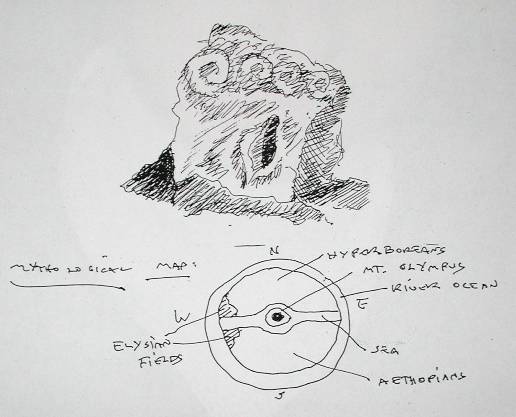
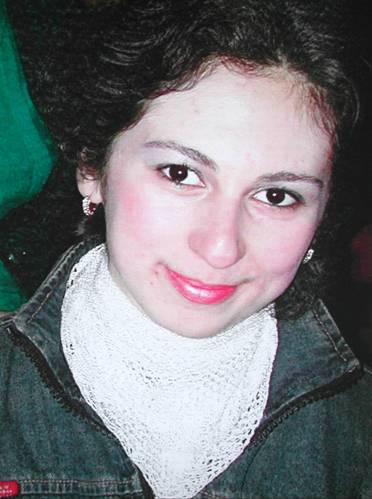
An artist is lucky as a Fulbright Scholar, he has learned
how to forget. I wrote this article in celebration of that
gift, the importance of forgetting.
The Important Of Forgetting
Being far away from your home country, in a land where the
language is strange even in the world of languages since
Georgian is one of the fourteen world languages but is only
used in Georgia, you think and read a lot. Recently on
reading again a 1976 publication by Edward T. Hall, called
Beyond Culture, I was reminded of the artist’s, the
creator’s need to forget. Children learn it as they play.
You purposely forget so that you can see the world with
fresh eyes. Hall’s says, “The failure to understand the
significance of play in maturing human beings has had
incalculable consequences, because play is not only crucial
to learning but (unlike other drives) is its own reward.”
To an artist, forgetting is critical to any pursuit. I have
the kind of mind that can remember brushstrokes as I walk
through a museum exhibition. It gets in the way when I pick
up a brush for a new painting. Therefore the first hour or
so of painting is to forget all those other painter’s
solutions in my mind’s eye. This allows me, or any creative
person, to come to material with fresh eyes. The poet,
dancer, writer, musician, inventor or learner can find
individual and new solutions to “stuff” that others have
only seen through established patterns or forms. The Russian
scientist Luria in the mid 20th century
established the importance of forgetting in his book The
Mind of a Mnemonist, the life story of a man who could not
forget anything and remember everything that was placed
before him. On first sight this would seem a blessing but on
closer look, the man was a mental cripple. If you gave this
man a problem to solve, as a visualizer he could solve it.
But he could not understand poetry and abstract ideas.
“Infinity” and “nothing” were beyond his mental grasp.
I remember in school when the teachers would reward the
students who could memorize the best. I could not. It took
me years to find ways to keep things in my mind. I was
always seeing the world with fresh eyes and drawing/painting
it with those visions. I finally learned that if I put a
context to the data that I could remember it and by taking
away the context forget it as easily. This has practical
implications. At one point in my life I build houses from
the ground up. I did five over the years, from the
architectural plan to the last nail or the trawl of
concrete. After the first house, I found that I had to
forget all the bad things that happened, all the aching
muscles and long hours, all the feelings of disappointment
when something did not come out as I planned before I could
start a new project. Since I am a visualizer who remembered
pictures of things placed in front of me, I had to learn to
forget them so they did not get in the way when I wanted to
have a new vision.
I found that it helps to know how the brain works and that
there are ways to help you forget. Japanese Zen monks repeat
a phrase until the words are lost and only the sound
resonated in the soul of the priest. As Hall says, “The
reason man does not experience his true cultural self is
that until he experiences another self as valid, he has
little basis for validating his own self.” At points in my
life I travel to find my other self, to forget the Western
man that could only see with Western eyes. In the West, we
place logic and irrationality at two opposing poles. Recent
mind studies find that they are positioned in the same place
in the brain. Irrationality is a way to start the process
toward logic and visa versa. In the front of the brain are
the faculties for perception, body movement, performance of
planned action, memorizing, and problem solving. If you
dance, it helps with problem solving or your performance of
a planned action. You can memorize better if you clear the
mind of old “stuff” that clutters up the corners. Forgetting
is essential to creativity. It is too bad that the warring
factions in the Middle East never learned that lesson. In
the long run for a human to enjoy the freshness of spring, a
new rain, another sun-filled day, your child’s small hand is
yours, love and sex, forgetting is as important as
remembering.
The one historical fact about America is our ability to
forget. We sell everything “new and improved”. What has made
America great is its ability to forget (see the new) and
remember (experience history) at the same time. John
Robinson, the great football coach of USC, once told his
team, “Today we play our cross-town rivals UCLA for the
national championship. It is the most important game in your
life, in your football career. Nothing can change that at
this moment but there is one thing I want you to remember
when you run out on that field, “There are two billion
Chinese who just don’t give a damn.” He helped them forget
and remember simultaneously.
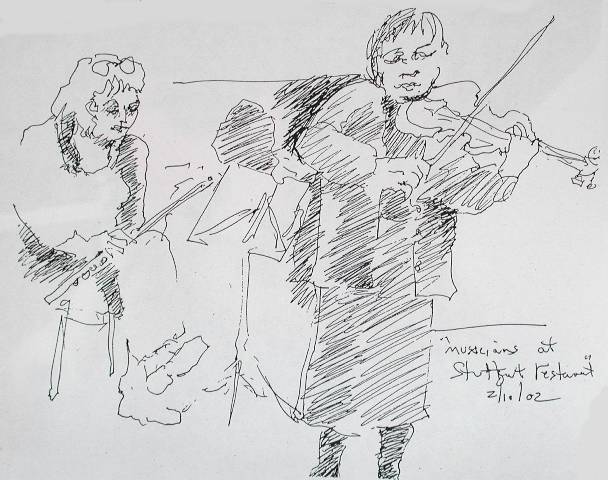
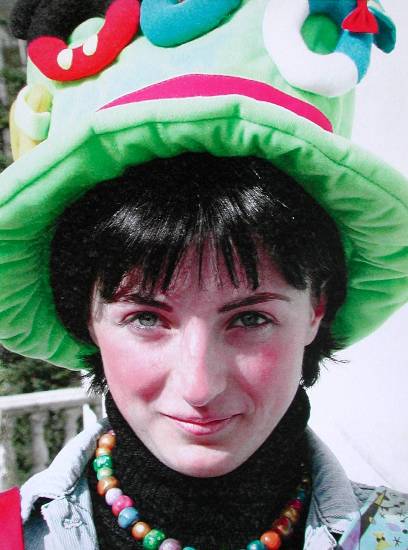
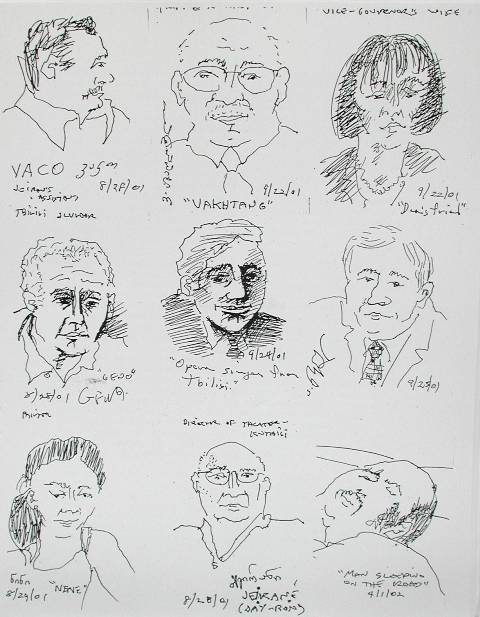
Tbilisi 7
Raphael showed me, after six months here, where to get
fresh-baked bread near our apartment and I learn the magical
phrase, “Gwali puri, “ for “fresh round bread”. Now at
least, I know that. What everyone knows here is elemental if
you live here. If you don’t, it is difficult and places you
in a constant state of uncertainty.
Today I go see Irina Koshoridze, Curator of Oriental Art, at
the National Museum and talk of their work, concerns and
worries/needs about security for the collection. She
mentions that they were sending four Kandinsky’s to an
exhibition of his work in Japan. The insurance value is
$400,000. They also own a Jules Olitzsky “field painting”
which was given for them to sell but since it was taken into
their collection, although it has nothing to do with their
collection or purpose, there has been a discussion for years
albout whether they can sell it or not. There is resistance
to any sale of art works, even when the work is given to
sell. While all this is going on, the curators are paid 40
lari a month ($20 USD), the guides 17 lari ($8.50 a month)
while the guards, who are paid by the government directly,
make 50 lari. It is the way of this society. It is the
tragedy of this society. Full professors with PhDs made 15
to 20 lari a month at major national state universities..
Last night I receive an email from Keti that the department
head got a quote for the room for the American Art Archive
Collection. I cannot believe the figure, $10,000, in a
society where thousands of skilled craftsmen stand on the
side of the road waiting, hoping, for a little work. I am
angry that they thought, “Let’s take the American.” I know
the Academy craftsmen are good but that figure is
ridiculous. I try to email back but Georgia On Line cuts my
message off five times. Finally, at 2:00 a.m., I sent
something, typing it on a disc, saving it and then copying
it for transmission. It is a frustrating society for anyone
who wants to do a quality job. I can see where initiative is
the first victim of greed and corruption and simple
inadequacy.
Anne and I go to Telavi on Friday in an Embassy van with a
delegation from the American Embassy of Georgia. We
accompany Terry to her new home for three months and I give
a lecture at Telavi State University. The city is at the
entrance to the Caucasus Mountains (only 80 kilometers from
Pankisi Gorge where the Russians, American and Georgians are
concerned with Chechnya rebels and al Queda terrorists) but
the beauty of the scene is breathtaking, a vista of
snowcapped peaks stretching as far as the eye can see in 360
degrees. I give my lecture on “Creativity and Information in
the 21st Century” to over 120 students, faculty
and interested citizens. One high school teacher brings
several of her best students. As I come into the room, they
all stand up. It is a huge success, I am told, and many ask
if I will come back. I sign autographs when I am finished
talking. Afterwards, we go to lunch with the Rector acting
as tamada, settle Terry into her new home, and drive back
the 150 kilometers to Tbilisi.
I came to the American Embassy of Georgia and noticed a copy
of the J. William Fulbright Foreign Scholarship Board Annual
Report 2000 and on the cover is my painting, Stripescape
#78. As one Fulbright alumnus says, “You will get more
coverage from that than being in the Fulbright Gallery on
the website.” Yes, I am proud that my work made the cover.
It is a joyous surprise.
Anne, Raphael and I go to the art bazaar down by the river’s
edge two straight days, examining the “art by the yard”
multitude of works, looking for something that my daughter
and her husband in Dallas might like. Her taste is not mine
or even close. I love modern and appreciate traditional
painting; she tolerates some modern but loves traditional
works of art. I use my art history mind to sort out the best
with my artist’s eye for paint quality and drawing skill. I
choose those which are well painted, photograph them and
send the image to Texas for them to consider. She does trust
my eye. I do know painting and I look for superior drawing.
Here, at the art bazaar, I do not see much that stimulates
my mind or sets my emotions on fire, and those are the two
criteria by which I select for myself. But again, this is a
choice for others. I want them to make a selection before
the weather gets better and all tourists come to pick the
bones of the artists.
The room at the National State University where I am
teaching on Tuesdays is arranged in the Georgian/Soviet
manner. There are chairs behind a long table for speakers,
row upon row of seats for students, and on the side another
row of chairs for visiting professors and guests. The idea
is to create a physical and psychological wall between the
professor and the student. I discussed this arrangement this
morning, pointing out that this has not been how artists
have arranged space since the late Renaissance with
Caravaggio’s paintings or Elizabethan times with
Shakespeare’s Globe Theater or his plays. The artist sets
out to break the imaginary “picture plane” between the
viewer (audience) and the action. I do all that I can this
morning to do this. I have student’s invade the professor’s
space to hold up cards. I wear a funny hat from Disneyland
to make them laugh and shorten the distance between student
and teacher. I show them the “cow project” of Zurich,
Chicago, New York and Waco which is an artistic as well as a
financial/tourist event. Lastly, I discuss the sculpture of
Nancy Graves, using a video by Penn and Teller. The class
runs from 10:15 to 11:25. In one way, I fail to break down a
wall which has been built by Russia and Georgia for years
since no student interrupted me with a question as we make
this journey, and in another way I succeed. After the class,
many students destroy the imaginary “picture plane” to ask
me for my autograph. Even as someone who wants to tear down
barriers, I am still not used to giving autographs for being
a good teacher.
Ketevan Kintsurashvili, my co-professor at the Academy in
the art criticism course, to give me Devi’s (her architect
husband) estimates on the room for the American Collection.
It was $3,500, a mere $6,500 less than the Academy
craftsman’s estimate. Obviously, they will not get the work.
Devi’s plan is in Georgian but I can see that it is thorough
and complete. The bottom line is within budget. In the
afternoon, I meet with Besarion Darjania, whose business
card says “Master of Cameo Carving” (a young craftsman who
is trying to organize an artist’s center and make a model of
the free enterprise system in Georgia). He takes me to his
proposed center, a hole of concrete at the bottom of a stack
of apartments, and to his workshop, crammed with other
craftsmen making superb cameos, jewelry and woodwork. A
member of Parliament comes by, Ketevan Tamaradze, who wants
to create a large photography exhibition of Robert Capa
photos (200-300) of Georgia with the writings of John
Steinbeck. The two Americans traveled all through the
Caucasus region with Capa taking over 4000 photographs.
Lastly, I worked with Maka Dvalishvili, Director of the
Georgian Arts and Cultural Center, who is a whirlwind of
projects on which she needs my help. I just proofread her
narrative to the Brooklyn Museum to send her museum
reproductions and we are jointly working on a grant to
create a newsletter, hard and website, for information to
organizations, artists and an interested public. Now, she is
beginning to plan a large exhibition to send to the United
States but someone from America must request it in writing.
She says that she trusts me to do it for her. I probably
will since we do trust each other. That is the coin of
working together in Georgia. In truth, it is the criteria
for working together anywhere in the world. The last
appointment of the day is to be at the American Embassy for
a grant on arts management in the performing arts.
Sharon Hudson Dean, the director of the Cultural Affairs
Division, asked my opinion on a proposal to bring three
performing arts professionals to Georgia for a four-day
workshop in arts management. She explains the idea and the
cost, $10,000. My first reaction was again, “This is
ridiculous.” I see no way that anyone can do any good in
Georgia in four days. It has taken me four months to build
trust with only a few of the arts managers and other
professionals. All you can do in four days is come, drink
cocktails at the Sheridan Metichi Hotel, eat good Georgian
food, visit a few locations (the walk-through where nothing
is seen of how the organization really functions), and give
a lecture with some practical suggestions and leave. I see
no worth in the project. It has not been thought out for a
lasting change. I will meet with the woman who is planning
it but I have great misgivings on its worth.
I am asked to extend my stay in Georgia and complete some of
the projects which I have jointly started with Georgians. It
is flattering but it is not in the best interest of Anne, or
me, or the people I work with. At some point in any venture,
it is time to leave. Georgians must solve Georgian problems,
using ideas that come from anywhere and techniques which I
might have helped them with in the course of my stay. On
email, it makes no difference if I am here or anywhere else.
Distance does not exist on email or a conference call. At
one time in history, distance was a determinate to
communications. Now, no! I am sure that Maka, Keti and Irina
will continue to communicate with me and I will continue to
help them from an American base. In what this society needs,
it is more important that they have people they trust in
America than working beside them here.
IN GEORGIA, THE PROBLEM IS SOMEWHAT KNOWLEDGE BUT MORE IT IS
A MATTER OF TRUST.
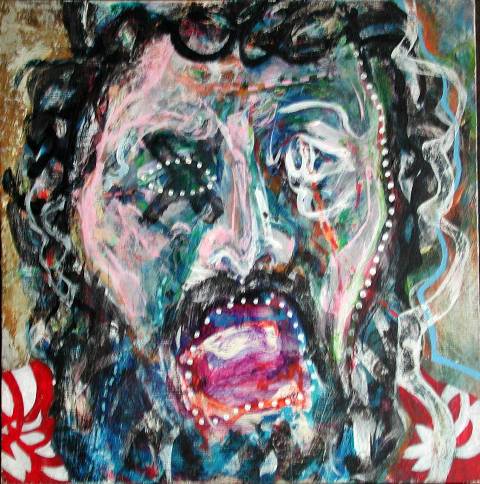
|

